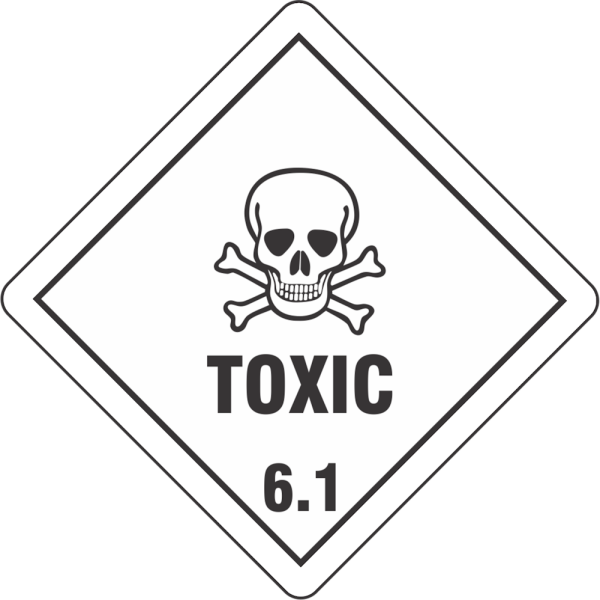When transporting toxic substances, preparation and knowledge are your best defence against potential emergencies. While serious incidents involving Class 6.1 materials are rare on UK roads, understanding how to respond effectively can make the difference between a controlled incident and a dangerous escalation.

Understanding the Risks
Toxic substances present unique challenges during emergencies because they can enter the body through multiple routes—inhalation, skin contact, ingestion, or even through cuts and scratches. What makes these materials particularly dangerous is that some effects may not be immediately apparent yet can be severely harmful or fatal even in small quantities.
Initial Response Steps
If you discover or suspect a leak or spill of toxic materials, your first priority must be personal safety and preventing exposure. Keep in mind that toxic vapours and particles may be invisible, so never assume an area is safe based on appearance alone. Move upwind of the incident, maintaining at least 100 metres of distance unless your emergency documentation specifies a greater evacuation distance.
Using Your Emergency Equipment
Your vehicle’s mandatory emergency equipment becomes vital in these situations. The required emergency escape mask provides crucial respiratory protection when you need to take immediate action. However, remember that these masks have limitations—they’re designed for emergency escape, not prolonged exposure.
Working with Emergency Services
When contacting emergency services, clearly communicate that you’re carrying Class 6.1 materials. Share specific details from your transport document, including the UN number and proper shipping name. This information helps responders prepare appropriate equipment and personnel before arriving at the scene.
Protecting Others
Your role includes protecting others who may inadvertently enter the danger zone. If it is safe to do so, place your warning triangles well back from the incident to prevent people from approaching. However, avoid placing yourself at risk while doing this; if you’ve already been exposed to toxic materials, minimise physical exertion as it can increase the absorption rate of toxic substances.
Documentation and Communication
Keep your transport documents and instructions in writing readily accessible, but never risk exposure to retrieving them if they’re in a contaminated area. If you must leave the scene, ensure you inform emergency services of the exact location of any documentation they might need.
After the Incident
Even if you feel fine after potential exposure to toxic substances, seek medical attention. Some toxic materials can have delayed effects, and early treatment can prevent serious complications. Document everything you remember about the incident while it’s fresh in your mind, as this information may be crucial for both medical treatment and incident investigation.
Prevention and Preparation
The best way to handle toxic substance emergencies is to prevent them. Regularly inspect your load restraint systems, ensure packaging integrity before transport, and maintain familiarisation with your emergency equipment and procedures. Consider scenarios specific to your regular routes and loads, and mentally rehearse your response plans.
Remember, your role in an emergency is not to be a hero; it’s to prevent the situation from becoming worse while ensuring professional emergency responders can do their job effectively. Your knowledge, preparation, and careful adherence to emergency procedures protect not only yourself but also the public and emergency responders who may attend the scene.
